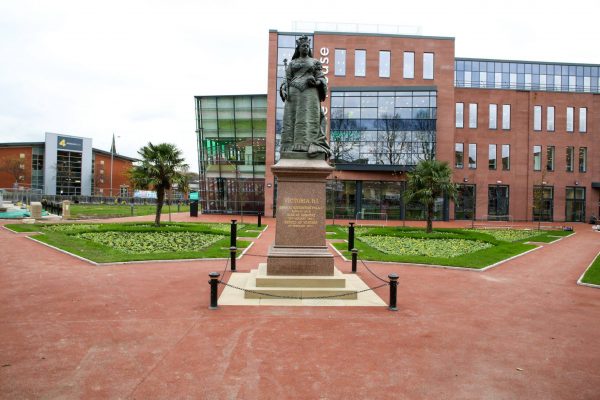NatraTex products are commonly used in the course of regeneration projects, creating beautiful coloured playgrounds and attractive decorative landscaping. But what exactly is urban regeneration and what is its purpose? In this article, we’ll explore urban regeneration in all its forms and the reasons why it is so important.
Definition of Urban Regeneration
Urban regeneration, sometimes referred to as urban renewal, involves the investment of public money or private finance into areas in need of lasting improvement. Examples of well-known urban regeneration projects include the construction of the Millenium Dome and the creation of the 2012 Olympic Park.
The different types of urban regeneration are:
- Economic
- Social/Cultural
- Environmental
What Are The Aims of Urban Regeneration?
Different types of urban regeneration have different aims. These might include:
- Tackling barriers to growth and reducing low employment
- Making areas more attractive to residents and investors
- Unlocking potential in deprived areas
- Increasing resident satisfaction regarding where they leave
- Creating opportunities for deprived communities
The overarching purpose behind this kind of work is to promote economic growth and improve the quality of life for residents.
What Are the Types Of Urban Regeneration
As noted above, there are 3 types of urban regeneration: economic, social/cultural, and environmental. It is important that regeneration projects in any capacity are designed with sustainability in mind as well as ensure a good quality of life for people who live and work in the area.
Economic Regeneration
Economic regeneration aims to increase business start-ups and growth, employment, earnings and skills development in an area. Its purpose is to reinvigorate local economies through both inward investment and the relocation of businesses and households in areas of decline.t
Economic regeneration is about creating places in which people want to live and work and is closely associated with social, cultural and environmental improvement, as well as processes of neighbourhood renewal.
Examples of economic regeneration include providing funding for transport and infrastructure, funding the development of brownfields, attractive private investment and encouraging regeneration building projects.
Social/Cultural Regeneration
Social regeneration refers to social interventions and approaches focused on health and wellbeing, education and skills development, specific community contexts, arts and culture, family, parenting and child-wellbeing.
This type of regeneration aims to address damaging social habits and enable participants to take part in and contribute to community life and wider society in a fuller, more meaningful and more collectively beneficial manner.
Environmental Regeneration
Environmental regeneration focuses on land renewal through the reclamation of derelict land and environmental improvement. This can be achieved through the development of urban green spaces, the effective management of green belts, redevelopment of brownfield sites, and the implementation of environmentally focused projects including those that promote walking, cycling and the use of public transport and recycling.
Supporting Urban Regeneration With NatraTex
At NatraTex, we have developed a wide range of products that are used in the course of regeneration projects across the UK.
Whether for social, environmental or economic regeneration, NatraTex surfacing products are an ideal choice for surfacing in areas ranging from parks and playgrounds to car parks and driveways in residential developments, and decorative footpaths to tie it all together. Our products can be used for a wide variety of outdoor spaces, including garden paths and office driveways. Our products are available in a wide variety of colours and finishes.
To find out more, contact us today and speak to our team or take a look at our regeneration case studies to see NatraTex in action.
Can't See Your Question?
Ask Us >


